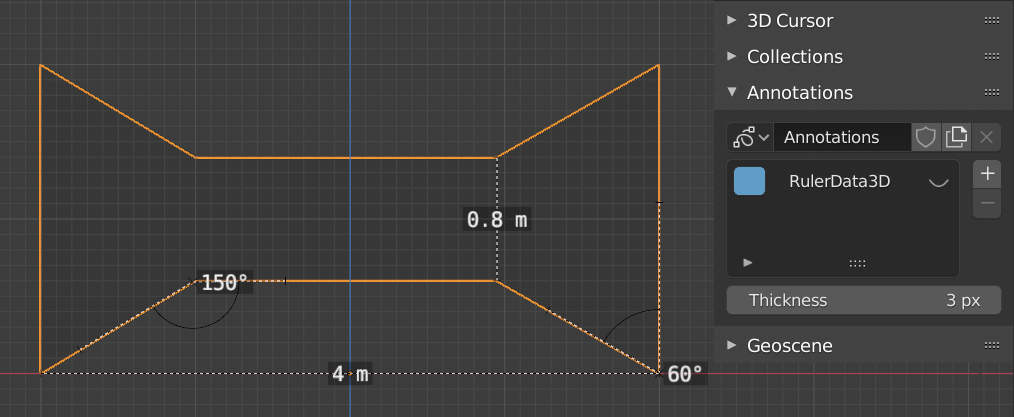Measure¶
Reference
- Mode
All Modes
- Tool
The Measure tool is an interactive tool where you can drag lines in the scene to measure distances or angles. Snapping to geometry could be activated for better accuracy or to measure wall thickness. The Measure tool can be accessed from the Toolbar.

Examples of the Measure tool.¶
Usage¶
Here are some common steps for using the Measure tool:
Activate the Measure tool from the Toolbar.
Click and drag in the viewport to define the initial start and end point for the ruler or protractor. You can add multiple measurements in the viewport.
Click on either end of the ruler to move it. You can always navigate (pan, zoom, …) or change the view (orthogonal, perspective) in the viewport to have better access to the ruler.
Holding Ctrl while moving enables snap to edges and vertices. More precise measurements are possible this way. A small circle appears when the end point is snapped to a vertex or edge.
Holding Shift while moving lets you measure the distance between faces. This works well only with parallel faces, e.g. walls.
Click on the midpoint of a created ruler to convert it to a protractor. Move this midpoint to set the vertex of the angle. Holding down Ctrl enables snap to edges and vertices. Move the endpoints to change the angle size.
A selected ruler can be deleted with Delete or X. To delete all measurements, make the panel visible. Delete the “RulerData3D” layer (see image above).
You can copy the measurement value to the clipboard with Ctrl-C.
All measurements are hidden when another tool is selected. They are shown when the Measure tool is selected again. Yet you can be do editing operations while the ruler is active. For example, you can edit the rotation or dimension of the selected object in the Sidebar. The measurement values do not appear in the Render output.
Unit settings and scale from the scene are used for displaying dimensions. Changing the units system (metric, imperial), or the units of length (cm, m, …), or angle (degrees, radians) will update the measurements.
Tip
There is also a Measurement setting in the Viewport Overlays panel. Edge length, edge angle, face area and face angle can be displayed in Edit Mode through this setting.